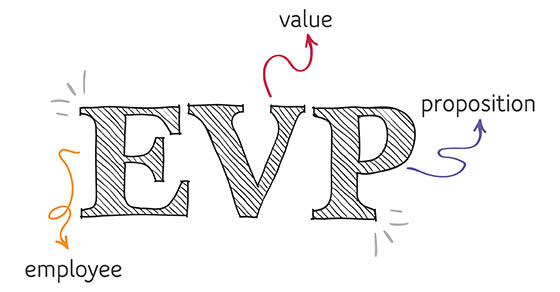Information Center
EMPLOYER TAX BRIEF
What’s your organization’s EVP?

Imagine you’re walking down the street one day and someone stops and asks you about your organization’s employee value proposition (EVP). How would you respond?
Perhaps you’d be a bit bewildered and need the person to define the term. Or maybe you’d know what they meant but have a little trouble articulating your EVP. Either response is completely understandable. In fact, according to a recent survey, there are plenty of employers in both situations.
Surveys say
An EVP is the distinctive combination of compensation, benefits, rewards, opportunities and experiences that an employer offers employees in exchange for their skills, capabilities and contributions.
Every organization has one, but you’d hardly be alone if you haven’t documented yours and put it into action yet. A report released in late 2024 by McLean & Company, an HR research and advisory firm, found that only 22% of the organizations it surveyed had an EVP.
Another survey from last year, this one by business research giant Gartner, found that employers were increasingly investing in EVPs but struggling to communicate with workers about them. The survey of more than 1,300 employees found that only 16% of respondents “reported knowing what makes up their organization’s EVP.” And 75% of HR leaders who responded to the survey admitted to falling short of communicating effectively about their organization’s EVP.
How to get started
The numbers make a clear case: Employers that take the time to define and communicate their EVPs gain a measurable advantage.
As you write your EVP, keep it authentic. Don’t embellish or “promise the world.” Rather, pinpoint and articulate the true positives of the employee experience at your organization. Expect to revise your first draft. Working with your leadership team and professional advisors, refine your EVP into a clear, compelling message that will resonate positively with current and prospective staff members.
When you believe you’ve got it right, share your EVP with staff. Consider distributing the final language via email with an explanation of what it’s all about. Then, perhaps ask supervisors to discuss the EVP further with their teams in meetings or one-on-one conversations.
Many channels
As indicated by the Gartner survey, having an EVP isn’t enough. You’ve got to leverage it regularly and consistently.
So, whether you’re just launching an EVP or already have one, communicate it via as many channels as possible. Include your EVP in job descriptions, online job postings, employment interviews, onboarding activities, internal emails, intranet posts and organizational meetings (such as “town hall” events).
Your people managers can once again play a pivotal role. Train and encourage them to keep employees connected to your EVP. They should raise and reiterate key points during team meetings, mentoring sessions and performance reviews.
Finally, think of your EVP as a living document. Work with your leadership team and supervisors to review and adjust it as necessary to reflect changes in your workforce, culture and strategic goals.
Valuable assets
When it comes to your EVP, recall that old expression, “If you’ve got it, flaunt it.” Your organization likely has more than a few things to brag about as an employer. Each of those positive attributes is an asset you can wield to your advantage in hiring and retention. Contact us for help assessing and managing the employment costs behind your EVP so it supports your broader strategic goals.